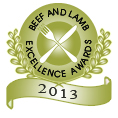 After Allan Barber’s column last week about meat industry debt levels, Keith Cooper, chief executive of Silver Fern Farms, took him to task for incorrectly reporting the situation with Silver Fern Farms’ debt facility, he writes in his latest guest blog.
After Allan Barber’s column last week about meat industry debt levels, Keith Cooper, chief executive of Silver Fern Farms, took him to task for incorrectly reporting the situation with Silver Fern Farms’ debt facility, he writes in his latest guest blog.
I stated that these expired in September 2012 and therefore the company was operating on a temporary extension. The correct position was that the debt facility was originally negotiated for two years from September 2010 and consequently due to expire in September 2012. This remained the position at balance date in September 2011. However in the 2012 annual report, the facility was stated as expiring on 31 December 2012.
Clearly, the company had arranged a three month extension at some point before the original two year facility expired and this was not a temporary facility, as I implied. Nevertheless, it was no more than a three month extension, while the next longer term arrangement was being negotiated.
I apologise for any incorrect interpretation, but still maintain the company’s current debt level at balance date was higher than could be considered comfortable.
However, in an interview with Jamie Mackay on the Farming Show last week, when asked to comment on the industry’s debt level, Cooper gave his opinion that the debt was a good thing. Because it was tied up in inventories, it would ensure the industry acted responsibly. This is almost exactly what I wrote last week, although I saw the discipline on the companies as a necessity, not a virtue.
In Cooper’s radio interview, he stated after record prices last year, meat companies are reining things in.
“It’s a damn good thing we do have stock in store and we do have high debt because that means meat companies are acting responsibly, and are feeding the product to market to create stability of price. I’m quite happy that us and other companies have debt because that means they’ve got stock in store and that means we’re managing markets well.”
I must give Keith credit for being unreservedly a ‘glass half full’ kind of guy which you have to be to survive in what I believe is New Zealand’s toughest industry. He promises farmers that things will improve.
“We are living in volatile times. There will be volatility, but through the volatility we will see a steady increase in the price we will receive from offshore,” and he expects meat companies will pay farmers around 90 dollars per lamb this year.
I’m not sure the glass is quite as half full as Keith Cooper suggests, especially in the sheep meat market. Although lamb leg prices in the UK are holding fairly well, especially for chilled product, prices for middle cuts, like racks, loins and tenderloins, in North America and Europe are under pressure.
The price of loins and tenderloins have dropped by as much as 30 percent in the last couple of months, while there are fears of another collapse in lamb rack prices because of competition from low priced Australian product. As a result, importers are not placing orders for New Zealand lamb, because they remember the last time prices collapsed.
The Middle East has gone quiet on lamb shoulders because of cheaper Australian product, although China is still firm. Here, it appears New Zealand exporters benefit from less Australian competition with fewer China licensed plants in Australia.
All this explains why the New Zealand consumer is able to buy plenty of well priced lamb available on the domestic market. But this won’t provide more than a minimal contribution to managing the existing inventory levels and it certainly won’t cope with next year’s peak production. The industry will be keeping its fingers and toes crossed for an early economic uplift in our main markets, UK, Europe and North America, because otherwise the glass won’t have much in it at all.
Allan Barber is an agribusiness commentator, with particular interest in the meat industry. He has his own blog Barber’s Meaty Issues. This item has also appeared at www.interest.co.nz.
 Representatives of a Belgian company which has imported New Zealand frozen and chilled lamb for almost 40 years have made a flying visit to New Zealand.
Representatives of a Belgian company which has imported New Zealand frozen and chilled lamb for almost 40 years have made a flying visit to New Zealand.




